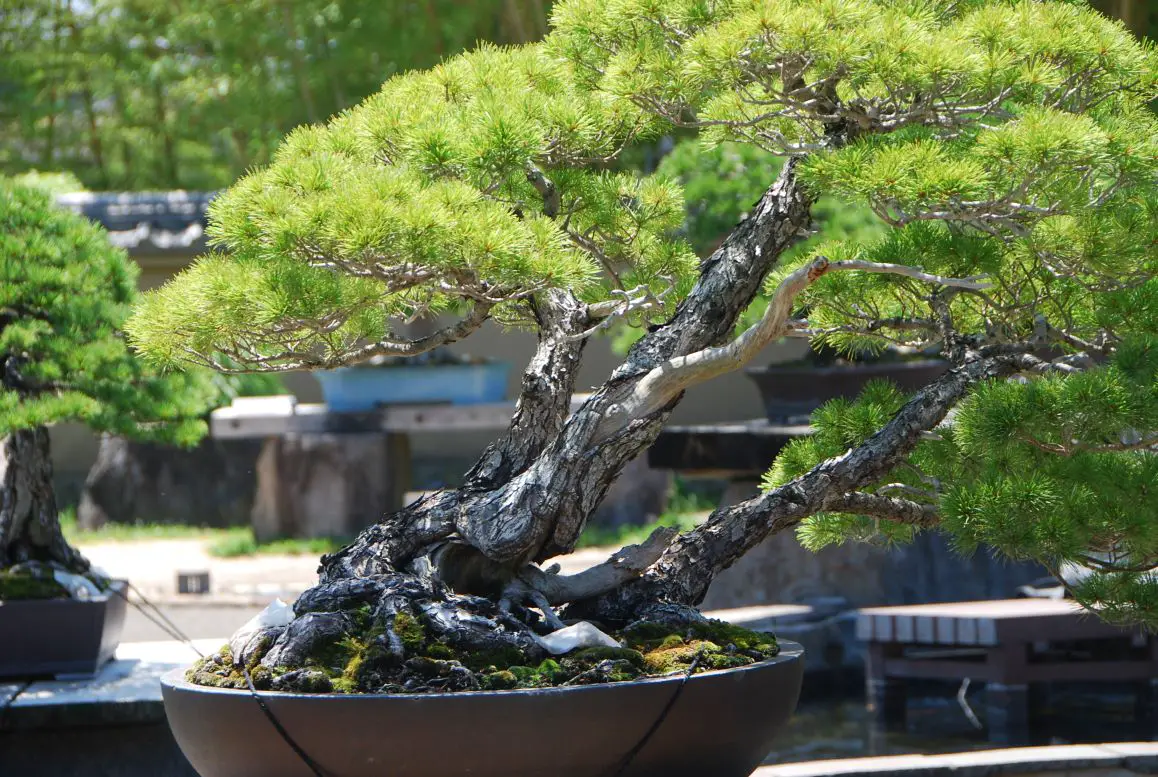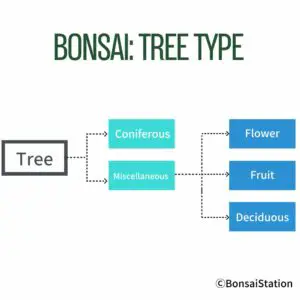Whether you have been gifted a bonsai tree or have recently acquired one, it’s important to know the type of tree you have in order to properly care for it.
You can identify what kind of tree you have by observing its physical characteristics such as the leaves, leaf arrangement, fruit, and flowers. If your bonsai tree has needle-like leaves, it is a coniferous tree. If your bonsai tree has broad leaves that are larger than coniferous trees, it is a miscellaneous (deciduous) tree.
Bonsai classifications: by tree type
There are several ways to classify bonsai, including its tree type as follows.
Tree bonsai are classified into-
- Coniferous trees, and
- Miscellaneous trees.
a. Coniferous trees
Coniferous trees are evergreens that have needle-like leaves and seed-producing cones. They have foliage year-round and do not shed all the leaves at once. Examples of coniferous bonsai trees include juniper, pine, spruce, and cedar.
b. Miscellaneous trees
Miscellaneous trees are further classified into-
b-1 Flowering trees,
b-2 Fruit trees, and
b-3 Deciduous trees.
Deciduous trees are those that shed leaves in fall. Flowering, fruit and deciduous trees often overlap each other because flowering trees often bear fruits and shed leaves in fall. But the trees are classified into one category depending on what we focus on the most for viewing; flowers, fruits or (color of) leaves.
How to identify your bonsai tree
Bonsai tree identification features
You can identify what kind of tree you have by observing its physical characteristics such as the leaves, leaf arrangement, fruit, and flowers. Observing bark characteristics is useful as well but it can sometimes be misleading because younger bonsai trees have smoother bark and you can draw wrong conclusions based on that.
Tree size and shape are not identifying factors because bonsai trees are made to grow small and are styled according to certain aesthetics.
Examining leaves and needles
Examining the leaves and needles of your bonsai tree is one of the most effective ways to determine its type. Specifically, the shape and color of the leaves or needles provide important clues about the tree’s identity.
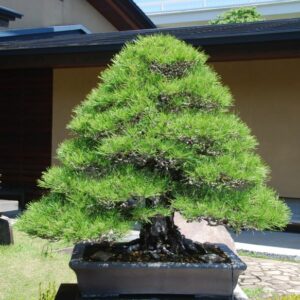
Black pine bonsai
If your bonsai tree has needle-like or scale-like leaves, it is a coniferous tree. Except for larch, all coniferous trees are evergreens that have foliage year-round. They have cones instead of fruits to bear seeds.
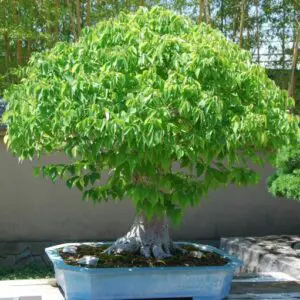
Oak bonsai tree
If your bonsai tree has broad leaves that are larger than coniferous trees, it is a miscellaneous (deciduous) tree. Leaves come in a variety of shapes such as oval, linear, and heart-shaped. Leaf margins can be deep-lobed or none. They are usually green during the growing season and change color during fall, which can be yellow, orange, and red, before falling off.
Identifying coniferous bonsai trees
Here are simple yes/no questions about leaf (needle) shape to identify which kind of coniferous bonsai trees you have, supposing you have one of the common bonsai species. By answering these questions, you may be able to tell your bonsai tree’s type.
Remember that identifying a bonsai tree can be a complex process, and there can be different leaf shapes within the same species. So, it is always a good idea to further investigate and consult with bonsai experts if you can.
Question 1
Do they have needle- or scale-like leaves?
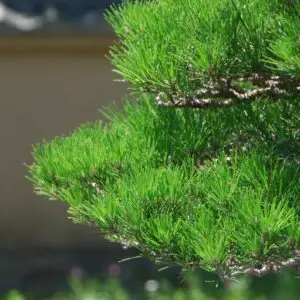
Japanese black pine needles

Japanese maple (Acer Amoenum)
If yes, go to question 2.
If no, it is likely not a coniferous tree.
Question 2
Do they have scale-like leaves?

Scale-like neeles

Needle-like needles
If yes, go to question 3.
If no, go to question 4.
Question 3
Do the scale-like needles are more pointy?
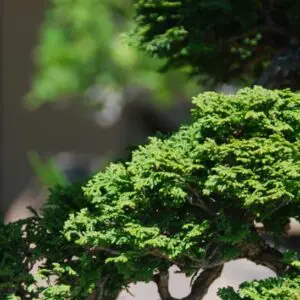
Hinoki cypress
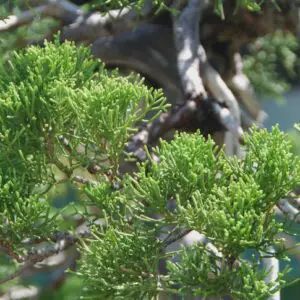
Japanese juniper
If yes, it is likely cypress (can be juniper).
If no, it is likely juniper (can be cypress).
Question 4
Are the needles arranged in bundles?
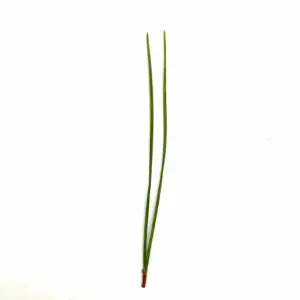
Bundles of 2 (pine)

Single, individual needles
If yes, go to question 5.
If no, go to question 6.
Question 5
Are the needles in bundles of 2, 3 or 5?
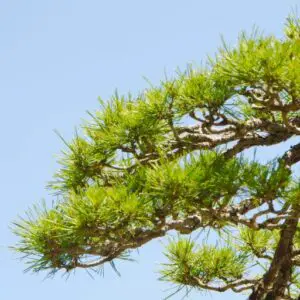
Japanese red pine needles
If yes, it is likely pine.
If no, it is likely larch.
Question 6
Are needles arranged in singles and have 4 sides?
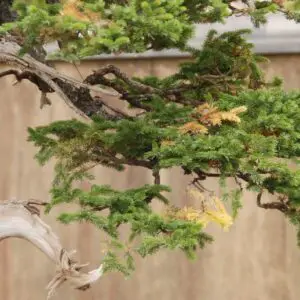
Ezo spruce
If yes, it is likely spruce.
If no, go to question 7.
Question 7
7. Are needles arranged in singles, flat with pointed tips?
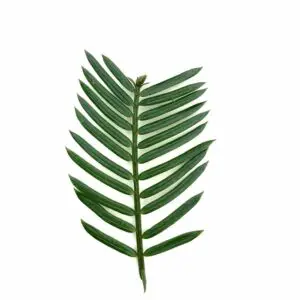
Flat with pointed tips
If yes, it is likely fir.
If no, go to question 8.
Question 8
Are needles arranged in singles, flat with blunt ends?
It is likely hemlock.
Identifying miscellaneous bonsai trees
Checking leaf shape
The shape of a bonsai tree’s leaves is useful to identify the species of the miscellaneous bonsai trees because different tree species have distinct leaf shapes. Here are some examples of common leaf shapes found in miscellaneous bonsai trees:
Beech
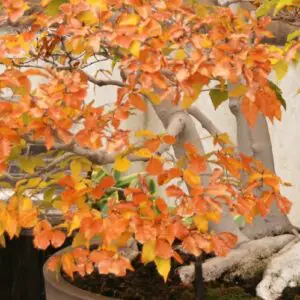
Beech leaf
Beech leaves are typically oval-shaped with a pointed tip. Leaf margins are wavy and they are typically arranged alternately on the stem.
Ginkgo
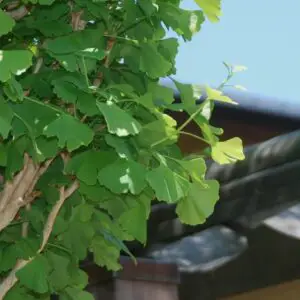
Ginkgo leaf
Ginkgo leaves have a very unique shape. They are two-lobed, fan-shaped, and flat with irregularly serrated margins. They are typically arranged alternately on the stem.
Japanese maple
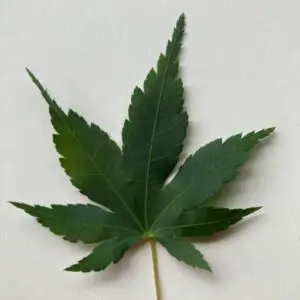
Japanese maple leaf
Japanese maple leaves have pointed, tail-like tips and are deeply lobed with incisions that extend almost up to the joint of the stem. Their leaf margins are irregularly serrated. They have from 5 to 7 lobes and they are typically arranged opposite on the stem.
Weeping willow
Weeping willow leaves have pointed tips and are usually more than 4 times as long as wide. They have a glossy texture and are arranged alternately on the stem.
Checking the leaf arrangement
The arrangement of leaves is another useful tool to identify the species of your bonsai tree as their arrangement on a stem varies depending on the species. There are several arrangement patterns, with each species exhibiting a specific characteristic. These patterns are classified as either alternate, spiral, opposite, or whorled but here, we focus on alternate and opposite.
With the alternate pattern, leaves are produced one at a time, with one leaf at each
node. With the opposite pattern, leaves are produced two at each node, on opposite sides of the branch.
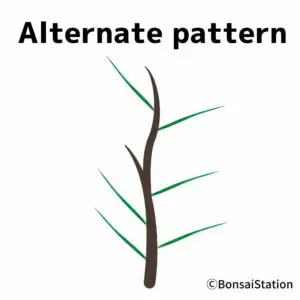
Alternate pattern
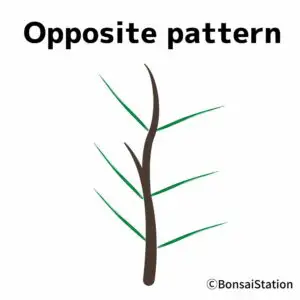
Opposite pattern
Make sure to check the pattern before pruning or on newly-grown stems. Trees with an opposite leaf pattern may be pruned to look like an alternate pattern.
Here are some of the bonsai tree species with alternate and opposite patterns. In general, alternate leaf arrangement is more common than opposite leaf arrangement among plants.
| Alternate pattern | Opposite pattern |
| Birch Cherry Elm Magnolia Oak |
Apple Japanese maple Pomegranate |
Observing the fruit and flowers
Another key identification aspect of your bonsai tree is the fruit and flowers when (if) present. They are unique to a specific tree species and can be a key to its identification.

Flowers of asahiyama cherry bonsai
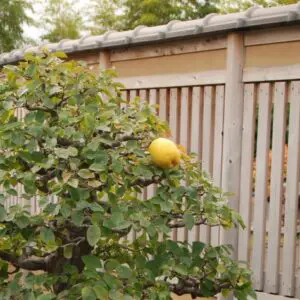
Chinese quince fruit
Note that flowers may come in different varieties for some species. Cherry blossom flowers, for example, can be different in shades of pink or white and the number of petals and shapes are different as well. Again, it is always a good idea to further investigate and consult with bonsai experts if you can.

